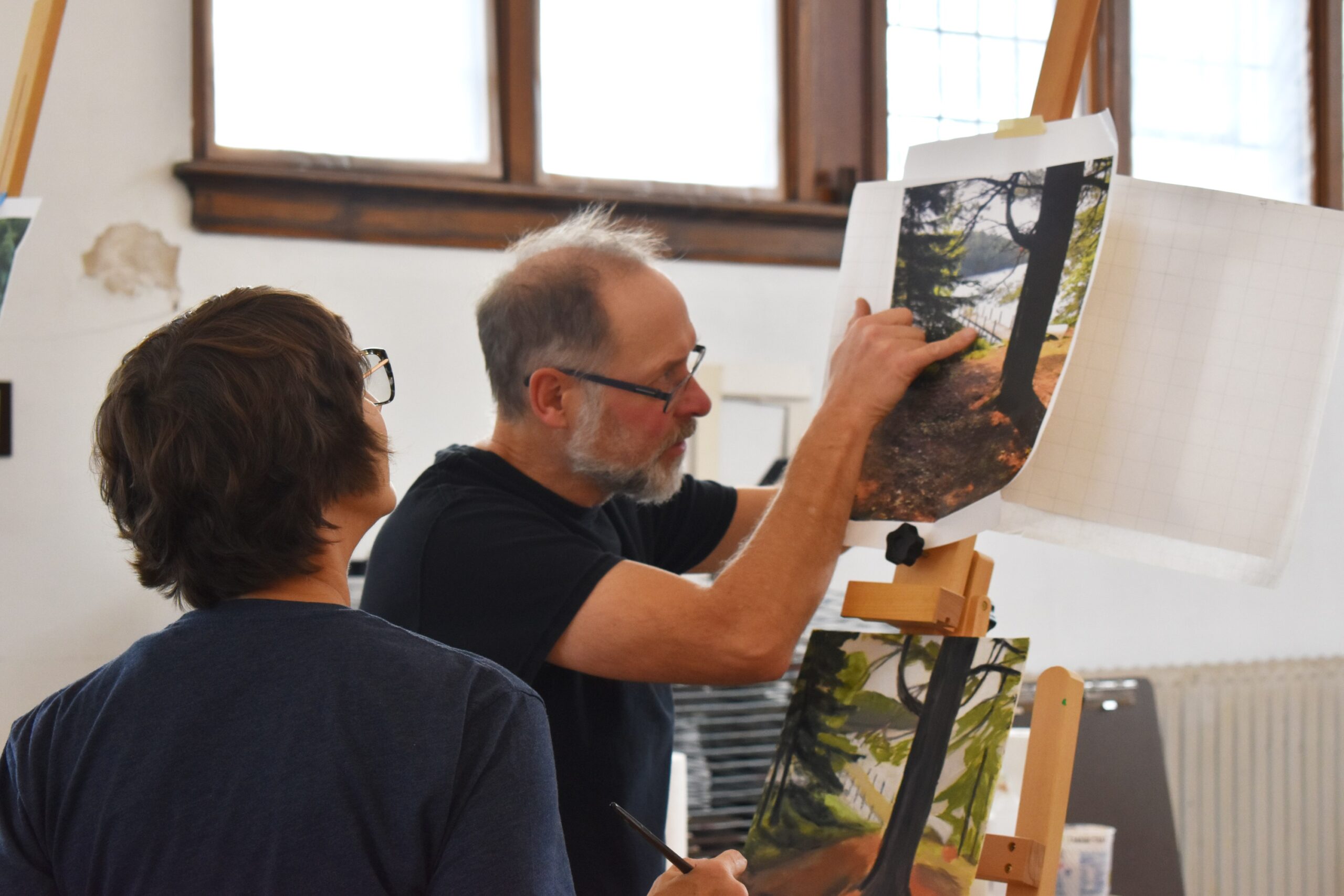Duluth Art Institute prepares for change
The Duluth Art Institute is a fixture of the Northland’s thriving creative community. The 501(c)(3) non-profit began as a club in 1897, inspiring a rich history of visual arts education and programming. In 1975, the St. Louis County Heritage and Arts Center became home for the DAI and other cultural organizations. Also known as “the Depot,” this location is currently home to the Institute’s gallery space—but not for long.
St. Louis County is forcing the DAI to leave the Depot, with a vacate date looming May 1 of this year.
“We were a charter arts organization for which the building was acquired,” states Christina Woods, executive director of the DAI.
Reasons the County Selection Committee rejected the DAI Bid for Leased Space include concerns about using the space for exhibition of art, HVAC updates, the proposed rate for the lease, and the desire to use the Depot for their own programming.
This all began in 2022, when there was a sudden imposition of an RFP (request for proposal) process for county-owned properties. “While a Minnesota statute does call on counties to follow an RFP procedure, it does not impose any requirement for counties to accept or reject any bids, nor was the statute ever enforced under three previous county attorneys,” Woods explains. “The statute also exempts from the RFP process any organization paying rent of less than $15,000 annually; a threshold the DAI fell beneath.”
One reason county commissioners listed for the RFP is a desire for organizations to pay market rate. “That thinking is counter to the expressed intent of the civic-minded volunteers in the 1970s who saved the former Union Depot from the wrecking ball,” Woods responds. “Afterwards, they handed the building to the county, free of cost, with the clear understanding it would be subsidized as a permanent home for arts and culture for the benefit of all.”
The DAI is considered the premiere community art center in northeastern Minnesota, and it offers “a robust visual arts experience for locals and visitors.” Creatives and art enthusiasts can attend art classes and camps, rent studio space, participate in contemporary fine art exhibitions, advance personal development, and take advantage of networking opportunities.

The Institute also celebrates diversity, shining light on the works of BIPOC and LGBTQ+ artists. “We value inclusion, equity, amplifying absent narrative and fostering safe spaces through arts learning,” Woods states.
Woods herself is Indigenous, serving six years as the DAI’s first Anishinaabe executive director. “That was a big step in advancing equity and inclusion for artists and arts learners,” she recounts. “Since then, the board of directors is over half BIPOC. We contract with artists who are gender non-binary, BIPOC, women, and many others who come from underrepresented groups in the visual arts.”
Woods plays a crucial role in the leadership of the organization, balancing “organizational vision with financial sustainability and community engagement.” She is an art enthusiast with a deeply creative heritage, having experienced the power art has to connect people. “When I noticed the DAI and their passion to protect and amplify this community asset, I was driven to do all I could to be a part of this special opportunity,” Woods recalls.
Creating and experiencing art is integral to our humanity, and there is therapeutic power in the practice.
“Art unlocks thinking that builds perspective and allows the exploration of ideas,” Woods explains. “Visual art involves critical thinking, personal reflection, emotional exploration, and cultural enrichment.” We make and use art for social commentary, personal growth and identity, inspiration, and innovation. Woods says the importance of art “lies in its ability to contribute to the multifaceted tapestry of human existence.”
The DAI is continuing to operate as usual during this period of transition and uncertainty. They are close to making an announcement regarding both temporary gallery space and a permanent solution. The organization has received an outpouring of support from the local community, including over $50,000 raised to meet a funding goal for the move. Another aspect of their plan involves a bonding request from the Minnesota Legislature, “which has responded with the enthusiastic support of bipartisan lawmakers statewide,” Woods mentions. “We look forward to their decisions at the end of the session.”

In addition to the gallery space currently at the Depot, the DAI also owns and operates an art studio used to capacity at the former Carnegie Library in Lincoln Park. This is where classes are held and artists can rent space, including the area’s foremost ceramics studio. “Our bonding request also includes renovating and expanding this property, in response to the community’s call for increasing our programming,” Woods adds. “Our goal is moving beyond the adversity we have experienced to creating a permanent asset for all to enjoy, learn and experience.”
Community involvement is intrinsic to the success of the DAI. Their education programming is designed based on community input, and a community panel is used to select art exhibitions. They are also beginning to provide ADA art equipment to help learners with special needs.
The public can support the DAI by becoming a member, taking classes, attending shows, donating to their endowment, volunteering at events, and contacting legislators to explain the importance of the organization.
You can see all upcoming programming and get involved by visiting the Duluth Art Institute website: duluthartinstitute.org.




